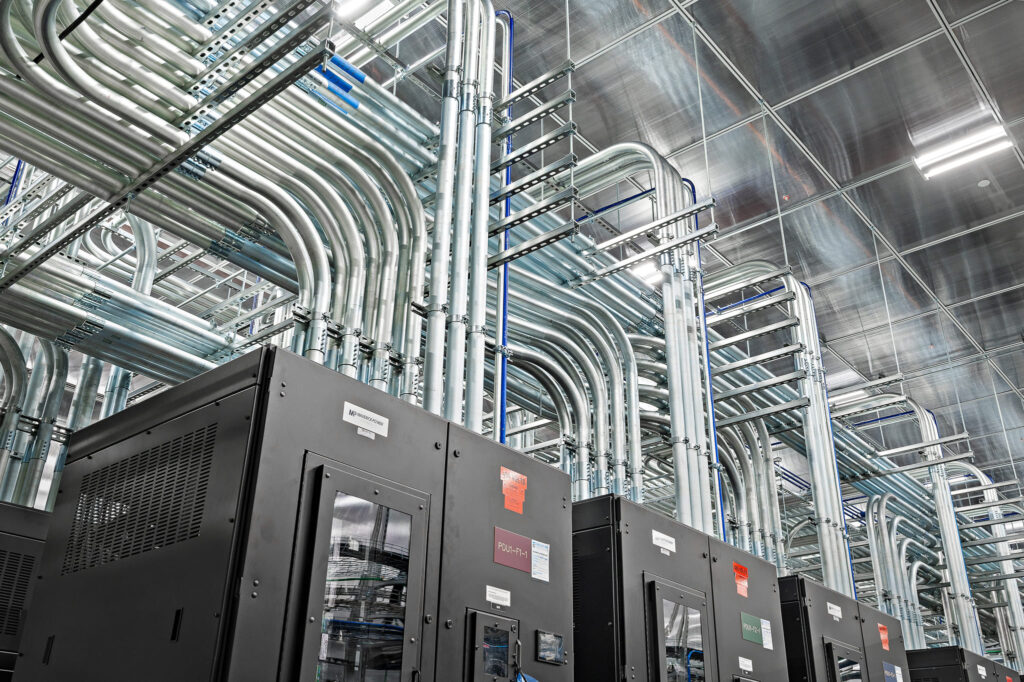Insider Brief
- Zero Point Cryogenics has received a U.S. patent for a new cryogenic system that enables continuous cooling to 500 millikelvin without requiring large volumes of helium-3.
- The system, called the Phase Separation Refrigerator, uses a helium-3/helium-4 mixture and a simplified evaporation-based technique to achieve steady-state sub-kelvin temperatures.
- Positioned between traditional helium-4 cryostats and complex dilution refrigerators, the PSR targets mid-range cooling needs for quantum computing, sensor calibration, and low-noise physics experiments.
A Canadian company has developed a new cryogenic system that could simplify access to ultra-cold temperatures needed for quantum research and other advanced physics applications, cutting out some of the cost and complexity of traditional approaches.
Zero Point Cryogenics, based in Edmonton, announced in a company post that its patented “Phase Separation Refrigerator” (PSR) has been officially recognized by the U.S. Patent Office and detailed in a peer-reviewed paper. The technology is the first new method for continuous cooling below 1 kelvin in more than six decades, according to the company’s release.
Cryogenic Sweet Spot
The system achieves base temperatures down to 500 millikelvin — just above absolute zero — without requiring large amounts of helium-3, a rare and expensive isotope typically needed for such cooling. That puts it in a middle ground between existing cryogenic technologies: helium-4 systems that bottom out around 0.9 kelvin and dilution refrigerators that can reach below 10 millikelvin but at significantly higher cost and complexity.

By targeting a narrow but underserved band between 1 K and 10 mK, the company hopes to serve emerging demand from quantum startups, low-noise electronics researchers, and national laboratories operating detectors and sensors that require long-duration cooling. Use cases include photonic quantum computers, superconducting devices, and sensitive optical instrumentation.
“Innovation is weird sometimes,” said the company’s Lead Scientist Dr. Paul H. Kim said in the release. “While building one of our 0.9 K cryostats, we were thinking about the helium mixture typically used in a dilution refrigerator and convinced ourselves the mixture could be used for cooling at “warmer” temperatures. With some modifications and testing in our 0.9 K cryostat, we discovered that by creating phase separation, you can preferentially pump helium-3 and have comparable performance to a pure helium-3 system, but with a smaller volume of the costly helium-3.”
Helium-3/Helium-4 Mixture
The PSR uses a helium-3/helium-4 mixture and operates based on a principle known as phase separation, in which the two isotopes behave differently at very low temperatures. Instead of relying on a dilution unit, which involves complex heat exchangers and precise flow of helium-3 and helium-4, the new system uses a simplified evaporation-based cooling process that still produces strong thermal performance.
Unlike “one-shot” helium-3 systems that must cycle and recondense their coolant, the PSR offers continuous operation. According to the company, it can produce about 1 milliwatt of cooling power at 600 mK and over 20 milliwatts at 1 K—sufficient for a range of steady-state experiments. The refrigerator includes automated control and integrated precooling features for faster cooldowns and easier use.
The invention originated as a rethinking of existing cryostat systems, with Zero Point Cryogenics engineers exploring whether a mixture typically used in dilution fridges could instead be used for higher-temperature applications. With adjustments, they found that helium-3 could still be preferentially pumped to drive cooling, enabling performance similar to helium-3 systems but with lower material volumes.
While dilution refrigerators remain the industry standard for research below 100 millikelvin, they require large helium-3 inventories, often exceeding several liters. By contrast, Zero Point Cryogenics says the PSR dramatically reduces that requirement while still delivering usable cooling for many mid-range experiments. Helium-3 has become increasingly expensive and difficult to procure as demand from quantum labs and defense contractors rises.
Patent Details
The patent covers the method of continuous evaporation via phase separation without requiring dilution, a new approach to reaching millikelvin-range temperatures at steady state. The company has said it will begin deploying the system to early partners — including university and government labs 00 starting in Spring 2026.
The new system enters a growing cryogenics market that has become increasingly important to the quantum sector. Quantum computers — especially those based on superconducting or photonic qubits — require extremely low temperatures to maintain coherence and suppress noise. As more companies scale their quantum prototypes and begin commercial experimentation, demand for cryogenic infrastructure is rising.
Zero Point Cryogenics has positioned itself as a supplier of simplified cryogenic platforms that reduce the operational overhead for researchers and engineers. The company already offers traditional helium-4 cryostats and is working on next-generation dilution refrigerators. The new PSR is intended to fill a middle tier that balances performance with operational simplicity.
Beyond quantum, researchers working on low-temperature materials, detector calibration, and space sensor technology may benefit from this intermediate cooling approach. The ability to achieve 500 mK without dilution opens the door for wider access to experiments that previously required more complex infrastructure.
The full technical description of the PSR is available in Physical Review Applied, offering additional insight into the helium behavior, pumping strategy, and thermal performance benchmarks. With the patent secured, the company is seeking additional partners for expanded deployments.


















